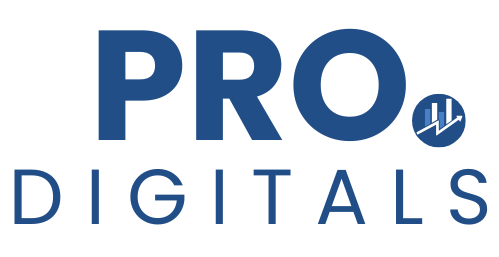You’ve stared at your Google Search Console data until your eyes blur. The numbers taunt you—high impressions, a flood of eyeballs, yet your Google ranking lingers somewhere between “obscure” and “forgotten.” It’s the digital equivalent of setting up a lemonade stand on a busy street… only for everyone to walk past. Ouch.
This isn’t just bad SEO juju. There’s logic behind the madness. Let’s dissect why your content gets seen but not clicked—and how to fix it without losing your sanity.
The Paradox of High Impressions and Poor Ranking: Why Visibility ≠ Victory
Impressions are Google’s way of saying, “Hey, your page is relevant… kinda.” But high impressions paired with poor ranking? That’s like being nominated for an Oscar but losing to a CGI hamster. The problem isn’t visibility—it’s conversion.
The Usual Suspects Behind This Digital Letdown
1. Your Title and Meta Descriptions Are Forgettable (Let’s Be Honest)
- Generic titles (“Top Gadgets 2024”) are the SEO equivalent of plain toast.
- Meta descriptions that don’t scream urgency or benefit get scrolled faster than a Terms of Service agreement.
- Pro Tip: Use power words. Compare:
- ❌ “Budget Travel Tips”
- ✅ “17 Sneaky Ways to Travel Europe for Under $50 a Day (Tested in 2024)”
2. You’re Ranking for Queries Nobody Cares About
- Broad keywords (“best laptops”) are a battlefield. You might snag high impressions, but unless you’re Apple, your low ranking is inevitable.
- Search Console’s Query Report reveals the culprits—terms with impressions but zero clicks. Filter these out like spam emails.
3. Your Content Misses the Mark on Search Intent
- Google thinks your page answers “how to grow tomatoes,” but it’s actually about “soil pH levels.” Users bounce, and your ranking tanks.
- Fix: Stalk the top 3 results. Are they step-by-step guides? Listicles? Match their energy.
4. Your Site Loads Like Dial-Up Internet
- A 3-second delay increases bounce rates by 32%. If your site is slower than a sloth on sedatives, users won’t stick around.
5. Featured Snippets Are Stealing Your Thunder
- Ranking #4? Congrats, but the snippet above you hogged 90% of clicks. It’s like being the opening act for Beyoncé.
How to Salvage Your Ranking: A No-Nonsense Game Plan
Step 1: Declare War on Low CTR
- Search Console’s Performance Report is your battlefield map. Target queries with CTR below 2%.
- Rewrite titles to exploit curiosity gaps:
- ❌ “Yoga Poses for Beginners”
- ✅ “7 Yoga Poses That Fixed My Back Pain in 1 Week (Beginner-Friendly)”
Step 2: Align Content with What Users Actually Want
- Search Intent 101:
- Informational? Use “how to,” “guide,” or “tips.”
- Commercial? Try “best,” “review,” or “compared.”
- Navigational? Brand names + “login,” “download,” etc.
- Example: A search for “best noise-canceling headphones” expects a comparison chart—not a 5,000-word essay on sound physics.
Step 3: Embrace Long-Tail Keywords (Your New Best Friend)
- Long-tail keywords = less competition, higher intent.
- ❌ “Meal prep ideas” (2M+ results)
- ✅ “Keto meal prep for busy moms with Instant Pot” (8,000 results)
- Tools like Ahrefs or Ubersuggest help uncover these gems.
Step 4. On-Page SEO: The Devil’s in the Details
- Headers (H2/H3): Use keywords naturally—no robotic stuffing.
- Internal Links: Guide users to related content like a digital concierge.
- Image Optimization: Compress files (TinyPNG is your friend). Rename
DSC_3482.jpgtogluten-free-banana-bread-recipe.jpg. We have a full article on how to properly optimize images — check it out.
Step 5. Speed Up or Get Left Behind
- PageSpeed Insights will roast your site’s performance. Common fixes:
- Enable browser caching.
- Ditch unnecessary plugins (looking at you, “Hello Dolly”).
- Use a CDN like Cloudflare.
Step 6. Schema Markup: The Unsung Hero of SEO
- Schema helps Google “understand” your content, boosting chances for rich snippets (FAQs, recipes, how-tos).
- Example: A recipe with schema might snag a snippet with star ratings and cook time.
When to Ignore Impressions (Yes, Really)
Impressions can be a vanity metric. If your baking blog ranks for “industrial cement mixers,” those high impressions are worthless. Use Search Console to filter out irrelevant queries like a spam filter on steroids.
Case Study: How a 5-Word Title Change Skyrocketed CTR
A client’s post—”Easy Dinner Recipes”—had 80K impressions but a 0.9% CTR. After tweaking it to “30-Minute Dinners for Picky Eaters (Under $10)”, CTR jumped to 5.3%. Rankings followed. Moral? Specificity sells.
The Hard Truth About Google Ranking
High impressions + poor ranking means Google tolerates your content, but users don’t love it. Fix your CTR, nail search intent, and stop obsessing over broad keywords.
And if Google still ignores you? Maybe whisper “algorithm update” three times in the mirror. (Just kidding. Mostly.)
TL;DR Cheat Sheet
- ✅ Search Console is your CTR detective—use it.
- ✅ Titles/metas should be specific, urgent, and benefit-driven.
- ✅ Match content to search intent like a puzzle piece.
- ✅ Speed matters. No one waits for a slow website.
- ✅ Long-tail > broad keywords. Always.
Questions? Drop them below. Or don’t—I’m not the SEO police. (But seriously, fix your meta descriptions.)



